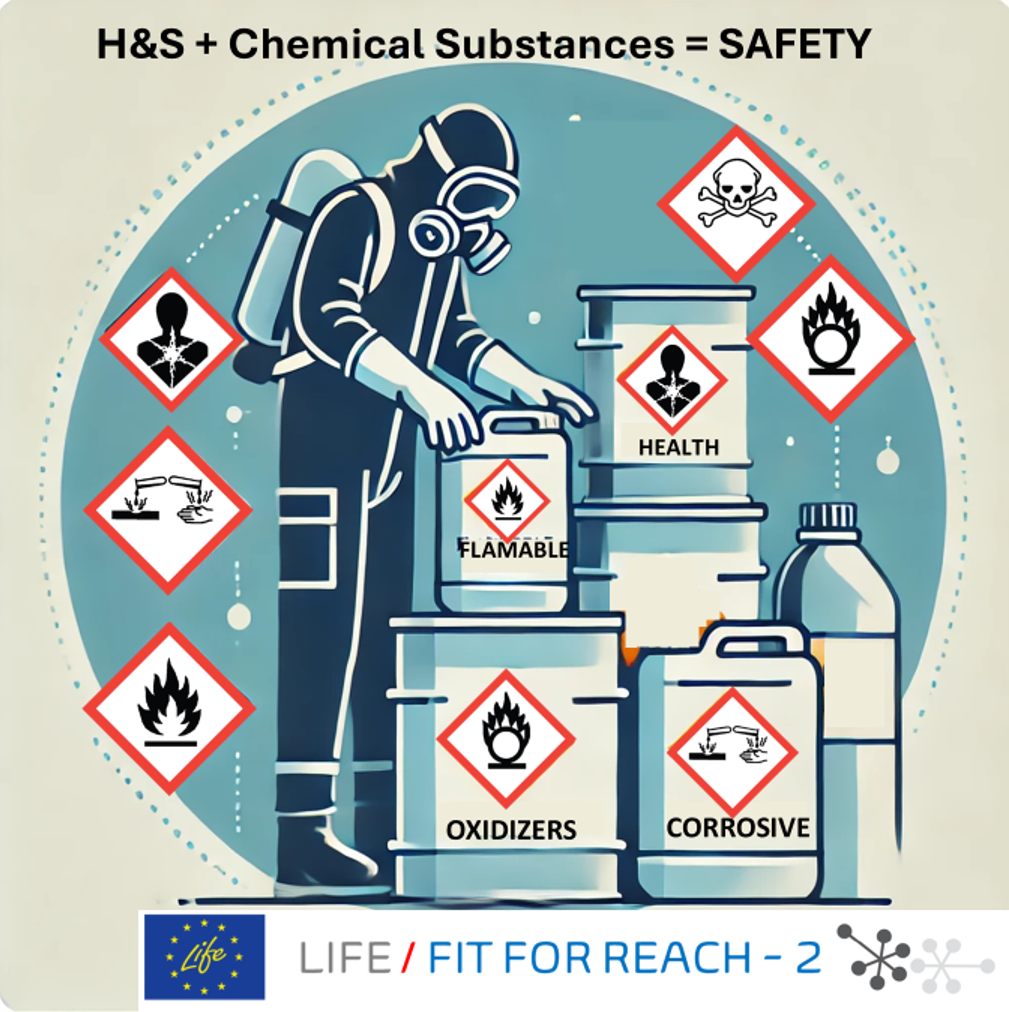
The health impacts of chemical exposure can be categorized into local and systemic effects. Local effects are typically immediate and involve irritation or damage to the point of contact, such as the skin, eyes, or respiratory tract. Systemic effects, on the other hand, may result from the absorption of chemicals into the bloodstream, affecting internal organs over time.
For instance, exposure to solvents like benzene can cause both acute effects, such as dizziness or headaches, and chronic effects, including bone marrow damage and leukemia (Smith, 2010). Some chemicals, like asbestos, are known to cause cancer after prolonged exposure, while others may have teratogenic or mutagenic effects, impacting reproductive health or causing genetic mutations in offspring.
Risk Assessment and Control Measures
The risk assessment process is a critical component of managing chemical hazards in the workplace. It involves identifying hazardous substances, evaluating the potential for exposure, and implementing control measures to reduce or eliminate the risk to workers. According to European Union directives and the United States Occupational Safety and Health Administration (OSHA) guidelines, employers are required to conduct regular risk assessments to ensure a safe working environment.
Employers must also ensure that employees are equipped with adequate personal protective equipment (PPE), such as gloves, respirators, and protective clothing, to minimize direct exposure to harmful chemicals. Additionally, engineering controls such as ventilation systems, chemical storage protocols, and spill containment measures are essential to maintain a safe workplace.
For over 500 chemical substances, permissible exposure limits (PELs) have been established to regulate workplace exposure and protect workers from long-term health consequences. Employers must monitor the air quality and ensure that these limits are not exceeded.
Regulatory Guidelines and Best Practices
Compliance with safety regulations and standards is essential for mitigating the risks associated with chemical exposure. Safety Data Sheets (SDS) provide critical information on the properties of chemicals, their hazards, and recommended protective measures. Employers must make these documents available to all employees who work with or around hazardous substances.
It is the responsibility of the employer to:
- Ensure that employees are informed about the risks associated with chemical use.
- Provide appropriate training on the handling and disposal of chemicals.
- Establish emergency procedures in case of accidental spills, leaks, or exposure.
In addition to workplace safety regulations, international guidelines such as the Globally Harmonized System of Classification and Labelling of Chemicals (GHS) aim to standardize the communication of chemical hazards globally.
Conclusion
Ensuring the safe handling of chemical substances is a shared responsibility between employers and employees. Through comprehensive risk assessments, proper use of protective equipment, adherence to regulatory standards, and regular monitoring, it is possible to significantly reduce the dangers posed by chemicals in the workplace. By fostering a culture of safety and compliance, we can protect workers from the short- and long-term health risks associated with chemical exposure.
Would You like to find out how the Fit for REACH project can help You with safe handling of chemicals – please fill in this contact form shortly and we will contact You very soon.
References:
- European Agency for Safety and Health at Work. Dangerous substances in workplaces: OSHwiki. European Union, 2021. https://osha.europa.eu/en/themes/dangerous-substances.
- European Chemicals Agency. Guidance on the Application of the CLP Criteria. Application of the CLP criteria, Part4: Environmental Hazards v.6. 2024. https://echa.europa.eu/view-article/-/journal_content/title/part-4-of-the-guidance-on-the-application-of-the-clp-criteria.
- ILO, 2021, “Exposure to hazardous chemicals at work and resulting health impacts: A global review”, International Labour Office – Geneva, ISBN: 978-9-22-034219-0 (https://www.ilo.org/sites/default/files/wcmsp5/groups/public/@ed_dialogue/@lab_admin/documents/publication/wcms_811455.pdf)
- Occupational Safety and Health Administration (OSHA). Occupational Exposure to Hazardous Chemicals in Laboratories: 29 CFR 1910.1450. OSHA, 2023. https://www.osha.gov/laws-regs/regulations/standardnumber/1910/1910.1450.
- Smith, Martyn T. “Advances in understanding benzene health effects and susceptibility.” Annual Review of Public Health 31 (2010): 133-148. https://doi.org/10.1146/annurev.publhealth.012809.103646.

